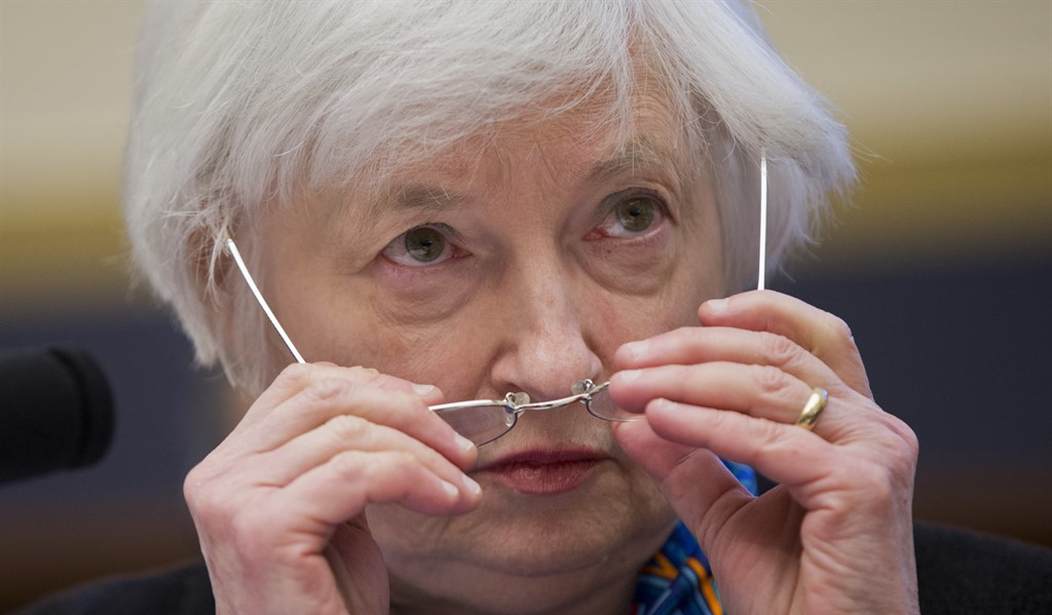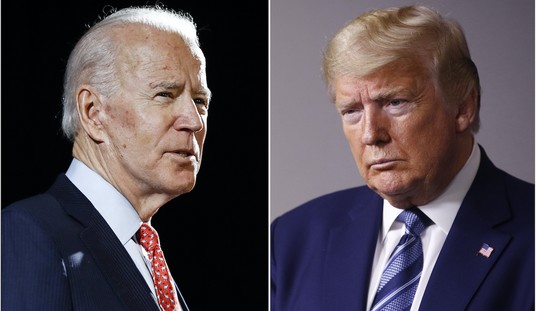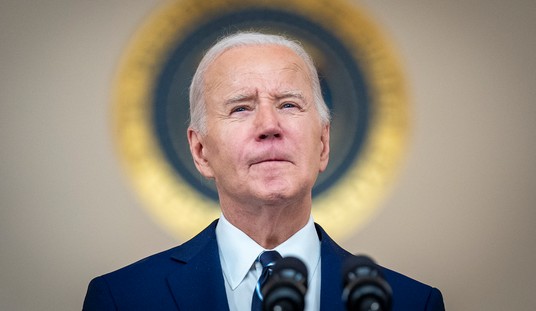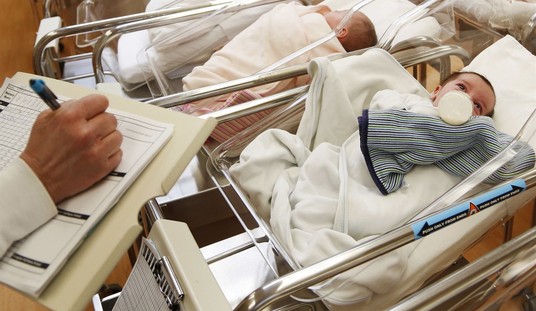My goodness. She’s so cluelessly out of touch, you almost wish she’d go steal a suitcase of men’s underwear and get put out to pasture for a couple of months.
What planet are you guys on?
— Proud American (@itswhatumakeit) December 12, 2022
In point of fact, persistent enough rumors are swirling about the gnomish Yellen’s departure, that potential replacements are already having to take themselves (winkwink) out of the running. There’s the CEO of Bank of America, for example. Speculative eyes had suddenly swerved towards him and, on Friday, he quickly issued an investor calming “I’m fine where I’m at, thank you.”
BofA's Brian Moynihan said he has no plan to leave his post, responding to a report that he’s on a short list to replace Treasury Secretary Janet Yellen if she steps down https://t.co/dJ2i7fKocq
— Bloomberg (@business) December 9, 2022
In the meantime, we’re stuck.
remember she said in 2021 that inflation is transitory and will go away in a few weeks.
— Vasu Mogan (@vasumogan) December 12, 2022
So, how about that job market? Here at HotAir, we’ve been covering much of the meltdown in the tech sector (Meta, Apple, Amazon, Twitter), job-wise, as well as some of the larger firms (PepsiCo) and the mainstream media side of the house, from newsprint to cable (think WaPo, Gannett, CNN, etc). Citi Bank was gloomy in their 2023 prognostications last week, predicting 2 million job losses in the coming year, and a “mild” recession, with an “IF” attached to that.
… The U.S. will likely tumble into a “mild” recession next year that sees unemployment top 5%, according to a new report from Citi Global Wealth Investments.
The group said in its latest outlook report published this week that the economy could lose an estimated 2 million jobs in 2023 as the jobless rate climbs to 5.25%.
“We believe that the Fed’s rate hikes and shrinking bond portfolio have been stringent enough to cause an economic contraction within 2023,” the economists said in the report. “And if the Fed does not pause rate hikes until it sees the contraction, a deeper recession may ensue.”
It seems there’s a psychological side to the business of downsizing in the face of a potential recession, too. There are apparently arguments to be made that some company lay-offs are a result of panic-induced copy-cat behavior.
…Even with high borrowing rates and persistent inflation, Stanford Graduate School of Business professor Jeffrey Pfeffer noted that companies tend to copy each other “in almost mindless imitation.”
“It is a process called social influence—people, including managers look to what others are doing (and saying) in a process of social contagion,” Pfeffer said, adding that this can even occur with layoffs.
Dr. Yalda Safai, a psychiatrist based out of New York City, told FOX Business that panic, hysteria and anxiety are contagious.
As a result, Safai said other companies who are observing their competitor “getting ahead of the game by cutting their loses” may be questioning whether they are doing something wrong.
So even if a company isn’t struggling they may be pressured to take action now, she added.
Yet, everywhere you look, there are still “Help Wanted” signs, in dang near every industry and market, although that number is also drying up, as I explained at the end of November. The Federal Reserve is looking at a target rate of 1.2 job openings per seeker, and we’re standing at about 1.68 openings right now. It’s still too high in their eyes.
Where are these missing bodies?
Part of the problem is that a significant segment of the population simply is not looking for work, even with myriad employment opportunities still available (which is an inflation driver in itself – you have to pay higher wages to keep the people you have).
…In turn, a lesser known data point has drawn outsized attention: the share of the adult population not working or actively looking for work. If workers are in ample supply, it gives the labor market some slack and limits wage growth. However, workforce participation came in at 62.1% last month, markedly lower than the pre-pandemic level of 63.4%.
The scant supply of workers keeps the labor market taut and helps fuel rising wages, which risk exacerbating inflation and pushing the economy into a recession, economists told ABC News.
To a certain extent, some of the folks who have left the job market did so during the pandemic, retiring early when their stock portfolios were fat, as were their savings. That may well not be the case for them right now, as the stock market has been brutal and inflation is chomping away on what were healthy bank balances, but once you’ve left the rat race, you are loathed to rejoin until forced to do so. Understandable, no? Or they became one-income families in order to take care of children during the lockdowns and school closures, and found out it works for them.
…The COVID era strengthened household savings as government stimulus and high-flying asset prices combined with a lockdown lifestyle that did away with expenses like travel and eating out.
U.S. households amassed about $2.3 trillion in savings in 2020 and 2021, a Federal Reserve study showed last month. Moreover, households in the lower half of income distribution were still holding a combined $350 billion in excess savings as of the middle of this year, the study found.
Those savings afforded workers the flexibility to make major changes like quitting their jobs and cutting expenses to afford the lost income, Jesse Wheeler, an economic analyst with the research firm Morning Consult, told ABC News.
…Recently, however, savings for many have dwindled, Wheeler said.
Last month, the personal savings rate fell to 2.3%, the lowest rate in nearly two decades, according to data from the Commerce Department.
That idyllic stretch cocooning at home is just about over. But there is still one demographic missing from the employment picture in a big way, and it might surprise you: 25-34 year olds have, like, vamoosed.
In 2020:
805 of every 1,000 people age 25-54 was working. That number was growing.
Today that number is 797 and falling.
We have a big problem, and it's not lack of workers.
It's lack of people working. pic.twitter.com/r4OF8OBBEj— Frog Capital (@FrogNews) December 12, 2022
Can they all be in their parent’s basements? This number is astonishing.
Almost 1 in 5 people ages 25-34 are not currently working. (7.4 million)
Joe's team is blaming the 3 million person worker shortage on lack of immigration. pic.twitter.com/qCykPYZybX— Frog Capital (@FrogNews) December 12, 2022
That demographic is in the child-bearing years, so perhaps a fair amount of them became that one-family household. Schmaybe? Explanations are few and far between for the disparity, though. The ABC report gives a sort of generalized “maybe it’s the gig economy, so they’re not reporting themselves as employed,” but surely they’re not all contractors or Lyft drivers. There could be a clue in this sentence:
…The savings boom and rise of remote work during the pandemic led some married households to drop from two incomes to one, and pushed some workers to move in with family members, allowing previously employed people to subsist on support from loved ones, economists said.
A tweet this morning seemed to support the basement dwellers’ thesis.
Record numbers of young adults living at home with their parents are helping drive the boom for luxury goods in the US and UK, according to Morgan Stanley https://t.co/dRyFpK2BPh
— Bloomberg (@business) December 12, 2022
While most of the federal programs – like the Federal Pandemic Unemployment Compensation (FPUC), which dumped an additional $600WK ON TOP OF traditional unemployment – are finally expired, there are still extended state programs thanks to federal dollars which may be contributing to this. Access to those depends on both your state and your occupation.
The tremendous amount of indiscriminate federal pandemic relief dollars financed a complete disincentivization of a particular swath’s return to the workplace. And they have yet to do so. That artificially created worker gap is helping gum up the economy. If you’re living at home, collecting federal stipends, you have lots of cha-ching to spend on crap, because your overhead is nil. I can do that math.
The looming question is, when does it end? When do the Yellens and the Powells point to the festering hole in the center of the workforce?
Or do they?







Join the conversation as a VIP Member